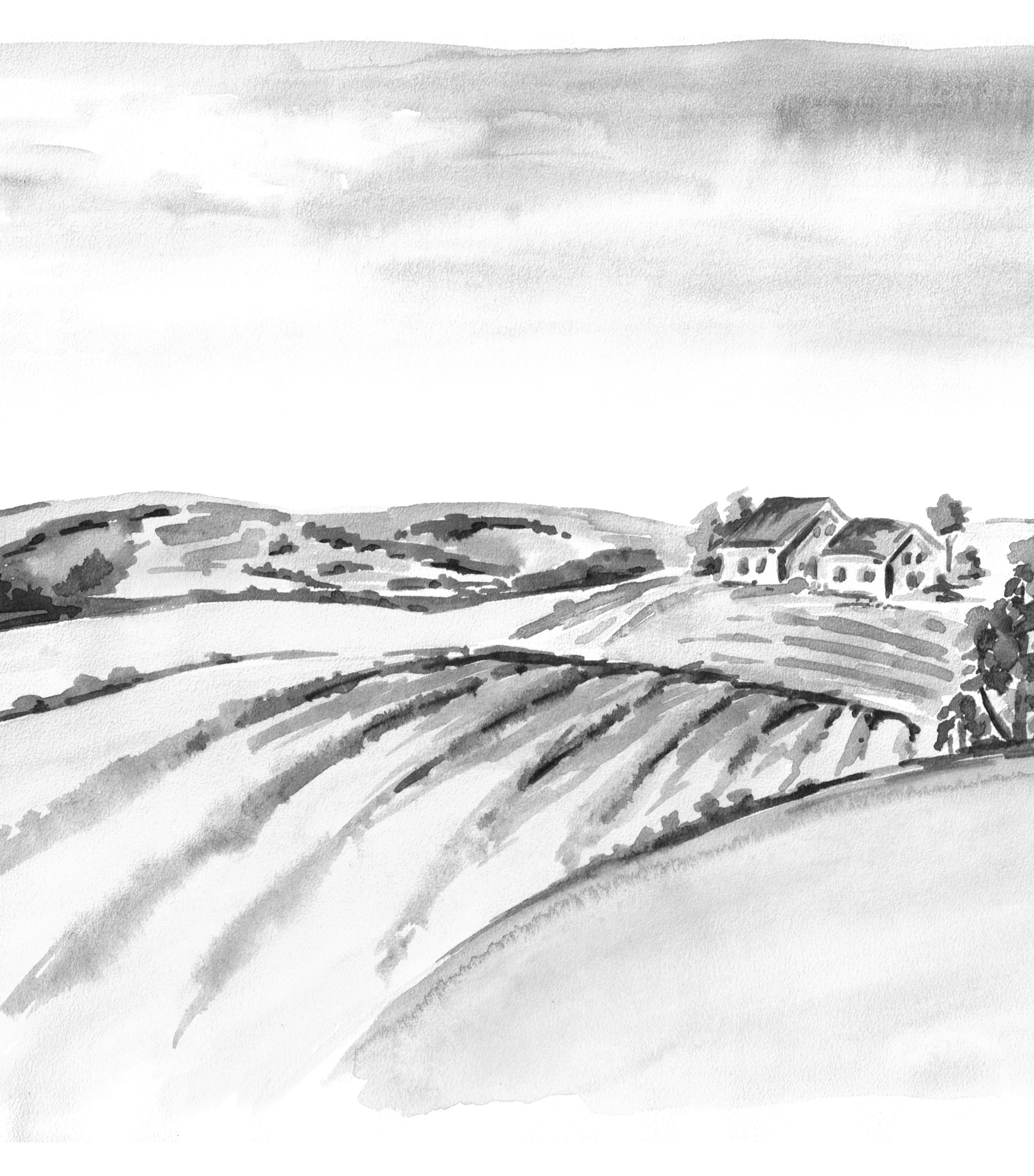
6 minute read
The Beauty of a Grandmother
Nestled in the Appalachian foothills of Northeast Georgia lies a sleepy yet vibrant closeknit community about two miles south of the little town of Baldwin. The descent down Highway 441 just below the Habersham/Banks County line, known to the local folks as Baldwin Mountain, offers a panoramic view of a lush, green, nature-rich landscape fed by the fresh, cool mountain creeks and streams from Lake Russell. The Hollingsworth community consists of many descendants from the “Old Country.” Daddy once told me of his cousin Bill asking my great-grandfather, Grandpa Sanford Stephens, where our family roots began. “The Old Country,” Grandpa replied. “Which Old Country?” Bill persisted. “I said the Old Country, son. Can’t chu hear good?” Because Daddy always said our people came primarily from England, my guess is that Grandpa Stephens was referring to our English heritage. My grandmother, Lena Stephens Smith, was the daughter of Great-Grandpa Stephens. She married Logan Sylvester Smith, my grandpa, on Christmas Day in 1910. Together they had six children - three girls and three boys. Daddy, George Clayton, was next to the last child just before Uncle Bruce. The Smiths lived off the bountiful harvest fed by the rich, bottom-land soils along Nancytown Creek. Cotton and corn were their primary cash crops. But of course, like most Hollingsworth families, their farm hosted a number of hogs as well as beef and dairy cattle to meet the family’s needs.
While farm life was rather difficult, at least from a 21st century point of view, it was normal living to our folks. They didn’t know times were “hard.” Survival required sunup to sundown taxing, laborious work and sacrifice. And money…there wasn’t much of that to go around in those days. And since money was hard to come by, local folks often traded a ham for a bushel of corn or even land for livestock. Bartering was used like cash to purchase goods and services. Grandpa Smith, for example, once traded a tract of land to Tom Ferguson, his neighbor, for a cow since she kept breaking through their adjoining fence. And Daddy spoke of an elderly lady in the community whose niece claimed her aunt could winter a family on $2.10. According to Daddy, during the Great Depression, the best cattle feed could be purchased for $2.00 and a pack of turnip seed for ten cents. Today, that will hardly get you a Coke and a pack of crackers. However, in the midst of Daddy’s stories of growing up on the family farm during the Great Depression days, the story that’s most compelling is a story of a life well lived; one colored with such beauty, truth, and redemption that I cannot help but periodically reflect on the goodness of its impact on my family. While Grandma Smith was a faithful follower of Christ, she was additionally the portrait of the model grandmother. For example, as a boy, I vividly recall her resting in her chair, legs covered with a colorful hand-woven afghan, that a relative had crocheted, while she read and studied her Bible. In fact, when I picture Grandma Smith, three images come to mind: her surprise when a pressure cooker of black-eyed peas blew the lid off and littered her kitchen from ceiling to floor, my helping her hand-grind fresh beef for her delicious hardy beef and vegetable stew, and her reclining in her chair next to a round side table (which I now have in my living room) and large picture window both adorned with African violets. She loved the beautiful velvety, deep-purple coloring of the flower. Since Grandma suffered on occasion from heartburn, her relief came from sipping on a Coke. And not just any Coke product. She insisted on the small 8 oz. green glass bottle since it had more “fizz” to help her burp and settle her stomach. But Grandma loved God’s Word and spent a great deal of time basking in its deep, rich truths. Despite the fact that I often witnessed Grandma reading her Bible through her thick-lensed eyeglasses, the worn pages and taped leather binding alone told the story of a frail little grandmother who spent countless hours soaking in the beauty and goodness of God’s Word. Nevertheless, the truthfilled book with rich stories of grace and redemption grasped her attention as she prayerfully, deliberately, and faithfully passed on these truths to her children and grandchildren. And it was this same commitment and unwavering love for the Lord that drove her faithfulness in walking with her six children down Harmony Church Road to the quaint little Baptist church every Sunday and Wednesday night. Grandpa Smith wasn’t much for church going...nor did he desire an automobile. However, for a brief time, he owned a Ford Model T until the brakes gave out coming down Baldwin Mountain. He immediately sold the car, returned to the familiar reins of a mule and wagon, and never owned another motorized vehicle. Daddy often spoke of his father’s mule-drawn wagon and the family’s trip home in the evenings after spring revival meetings with the light of a lit pine knot. He said the light reflected off the tombstones in the cemetery and looked like a white holy city. Other than that, I’m not sure Grandpa attended church regularly like Grandma.
Advertisement

Grandma knew this…God’s Word would change the heart of her children. Thus, she demonstrated the importance of time alone with God. Just as the parched soil and summer fields of the Smith farm depended on the soaking baths of rain to yield healthy crops of corn and cotton, so does our parched souls rely on the truths of the Word to produce a beauty and goodness that yields a bounty of fruit in the lives of the believer.

Today, some of Grandma Smith’s descendants have served in full-time ministry as pastors and also foreign missionaries. My oldest brother is a linguist and has helped translate the Bible in various Spanish dialects and even collaborated in composing an alphabet system for a tribe in Guatemala who had no written language. Others faithfully serve as Christian educators, doctors, counselors, journalists, business men and women, and community leaders. Grandma knew something about the intrinsic truth and beauty and the inherent goodness of a life sacrificially given to Christ. While she never lived to see the number of her brood who would live out the gospel, she literally impacted the world in countries like Ecuador, Mexico, Guatemala, the Philippines, and Albania, to name a few, through the lives of her descendants. While the fertile soils of the Hollingsworth community produced much more than Grandma ever lived to witness, it wasn’t the corn and cotton on the Smith family farm that were instruments of success. Nor was it the many family hands that turned the soil with the mule-drawn plows or the calloused hands that picked cotton and corn. Although the knowledge of good farming practices paid dividends by feeding the hungry mouths of the Smith clan, it was the wisdom of a gentle, humble little grandmother whose devoted hands faithfully turned the pages of her Bible while God, in His faithfulness, patiently and mercifully turned the hearts of her children, grandchildren, and great-grandchildren. Truth, beauty, goodness...these words best describe my sweet grandmother. Better yet, they describe the character of a triune God whose efficacious grace knows no bounds, whose presence enlightens the eyes of the unbeliever, and whose very words make the spiritually dead live again! He is the epitome of truth, beauty, and goodness. And His good work continues today through the gospel of Jesus that redeemed my grandmother, to the same Jesus made known to her family through her example. God’s looking not for those who display eloquence of speech nor those with grandiose qualifications. He is, however, looking for those who suffer not from idle hands, for ordinary people with renewed hearts (like that of my grandmother) to harvest the plenteous fields. For “she looks well to the ways of her household and does not eat the bread of idleness. Her children rise up and call her blessed…” (Proverbs 31: 27-28a, ESV).










